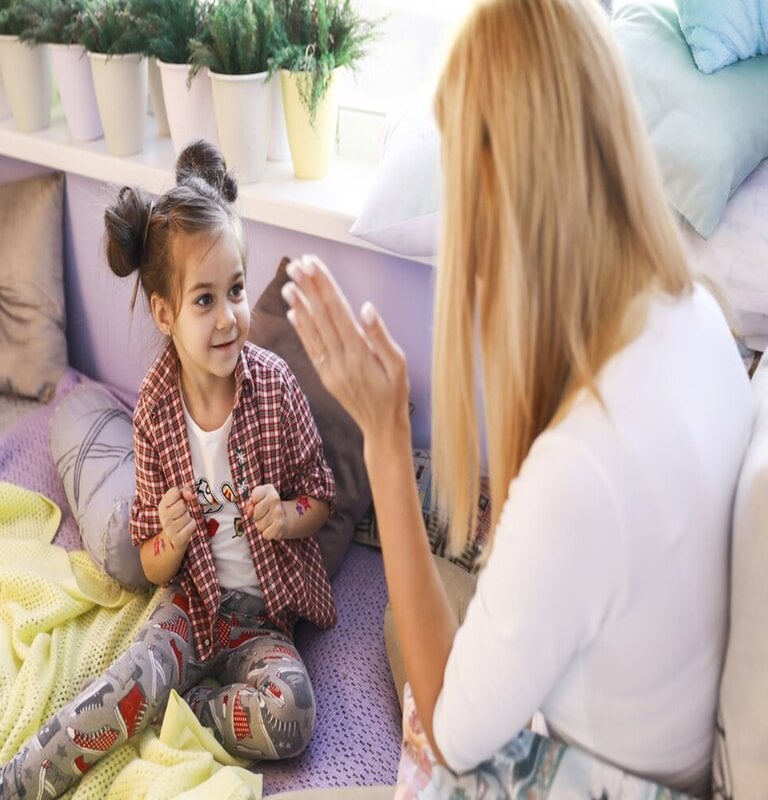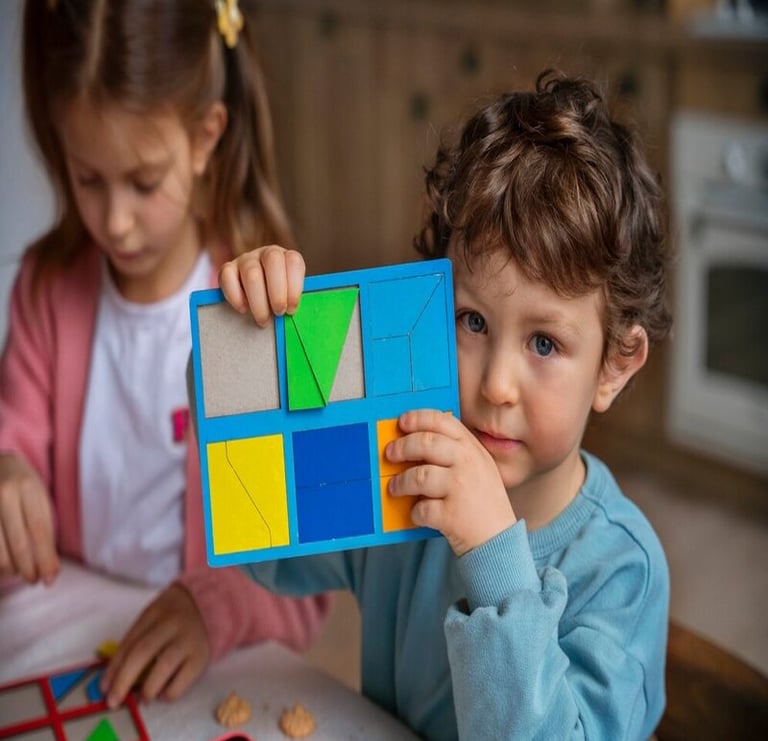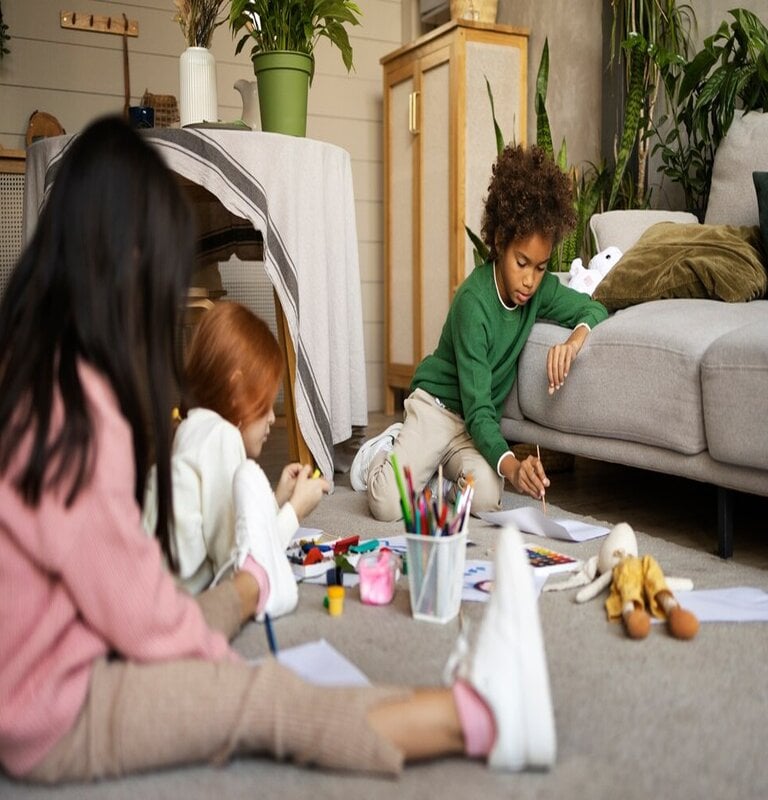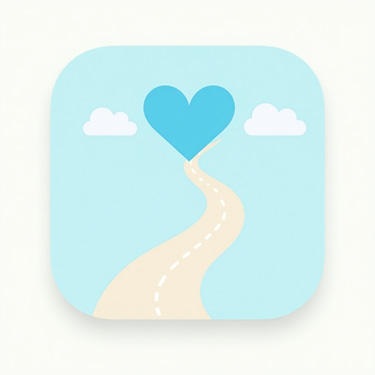🧠Communicating and Connecting in Autism,
Because every form of expression deserves to be heard: words, gestures, gazes, and play.
Play isn't just for entertainment; it's an essential channel for children to discover the world, interact with others, and develop fundamental skills. For children with Autism Spectrum Disorder (ASD), play becomes a key tool to stimulate language, communication, and emotional connection. Many children with ASD may struggle with verbal expression, maintaining conversations, understanding communicative turns, or interpreting others' gestures and emotions. Therefore, integrating play into a therapeutic or family setting can facilitate these learnings naturally, enjoyably, and respectfully.
When we play with them—be it with dolls, cars, blocks, balls, puppets, or simply body games—we give them the chance to observe, imitate, experiment, and rehearse different ways of communicating. For example, when building a block tower, we can wait for them to look at us to ask for another block, name colors, practice taking turns, or simply celebrate together when it falls. These small interactions, repeated in a safe and supportive environment, create concrete opportunities for the child to incorporate new words, gestures, sounds, and interaction forms.
Moreover, play promotes functional language: that is, the language we use to request, ask questions, comment, reject, or share experiences. If we support these activities with visual aids (like pictograms or action cards), simple songs, gestures accompanied by words, or even communication boards, we increase the likelihood that the child will understand and use new ways to express themselves. It's not about forcing speech, but about creating bridges, opportunities, and shared moments that invite language to emerge from motivation and connection.
In this section, you'll find ideas, materials, and games adapted to different communication levels. From activities for those who aren't yet speaking to suggestions for those starting to form complete sentences or developing social language. Our goal is to support you so that play becomes a daily space for learning and enjoyment, always respecting each child's unique pace and the transformative power of genuine connection.


🎲 Games to Boost Language in Children with ASD
Communication is much more than just talking. It involves sharing meanings, connecting with others, expressing emotions, understanding intentions, and building bonds. For individuals with ASD, this process can be different, challenging, or even frustrating without the right tools. Some children develop language late, others use alternative forms like gestures, sounds, gazes, or devices, and some can speak but find it hard to use language functionally or socially appropriately.
It's crucial to understand that every form of communication is valid. The first step in support is to observe without judgment, identify a child's communication strengths, and offer strategies adapted to their style. Some children need more time to respond, others require visual aids to understand what's being said, and many benefit from clear routines, predictable environments, and concrete interaction models.
In this section, we invite you to explore, deeply and empathetically, how communication is built in people with autism. We address topics like expressive and receptive language, echolalia, literal comprehension, inference difficulties, social (pragmatic) language, and how these aspects can be approached by family, school, or therapy. We also share practical strategies to enrich a child's communicative environment: from modifying how we speak, to choosing spaces where they can feel heard, respected, and supported in their unique way of communicating.
Our goal is for this information not only to help you better understand a child with ASD, but also to build more meaningful, close, and authentic relationships. Because when we learn to communicate with respect, play, and empathy, we open pathways to true inclusion, where every voice—verbal or non-verbal—is valued.


🗣️ Language and Communication in Autism
Augmentative and Alternative Communication (AAC) methods encompass a set of strategies, tools, systems, and technologies that enable individuals with speech difficulties to communicate effectively. Far from being a last-resort solution, AAC is a powerful, inclusive, and transformative pathway for many individuals with ASD. When a child cannot express themselves verbally or their oral language is limited, AAC opens a concrete door to expressing their thoughts, emotions, needs, desires, and opinions.
There are many types of AAC: some use unaided systems, such as natural gestures, signs, or communication boards with pictograms. Others employ aided tools, like mobile applications, electronic devices with voice output, or programmable buttons. What's crucial is that the chosen system adapts to the child's cognitive, sensory, and emotional level, is functional in their daily environment, and has the necessary support so it's not just a tool, but a true form of communicative empowerment.
In the case of autism, AAC can be a fundamental ally from the earliest years. It doesn't replace oral language; rather, it accompanies and enhances it. In fact, in many cases, its early use facilitates the emergence of speech. Furthermore, it reduces frustration from not being able to be understood, improves social interactions, and allows the child to participate actively in their environment: at home, at school, in therapies, and during playtime.
In this section, you'll discover what types of AAC exist, how they are implemented, what materials you can use at home or in class, and why it's so important for family, teachers, and therapists to work as a team. We will also debunk common myths, such as the belief that "if you give them pictograms, they won't speak," and demonstrate with evidence and real testimonials that AAC is a path towards greater autonomy, inclusion, and human connection.


🧠 What are Augmentative and Alternative Communication (AAC) Methods?
💼
"What for many is a weakness, for me became my greatest strength." — Satoshi Tajiri 🧠 Creator of Pokémon. Diagnosed with autism.
🧩 Free Resource for Families and Professionals
We're gifting you a PDF activity kit, ideal for children with Autism Spectrum Disorder (ASD). It includes cutout cards, games to stimulate attention, coloring activities, playful dynamics, and much more.
📚 This material has been compiled from various autism communities with the goal of sharing, supporting, and enriching learning through love and inclusion.
💖 Download it for free and start enjoying it today!
📥
Are you a Professional or Do You Provide Services Related to ASD?
At MiRutaTEA, we're developing a new section where therapeutic companions, psychologists, speech therapists, psychopedagogues, specialized teachers, and other professionals can showcase their services through our app and website.
🧩 What Will You Be Able to Offer?
Therapeutic services, school support, or stimulation.
Workshops, group activities, or intervention proposals.
Links to your social media or professional website.
Contact information so families can easily find you.
💙 How to Join?
We'll soon launch a low-cost monthly subscription system so you can be part of our community. In the meantime, you can complete the contact form and tell us about your work.
🚀 Join a Network Designed to Connect Families with Professionals Committed to the Inclusion and Well-being of Individuals with ASD.
🔗 One Click Makes a Difference
Follow us on social media and help us reach more families with information about autism and alternative communication.
📲 Your support means a lot! 👇
💙 At MiRutaTea, we believe in the power of every voice.
Your experience can support, inspire, and help someone feel less alone.
🧩 Click the button and join the blog: read, share, and be part of the conversation.
This space is yours too.
